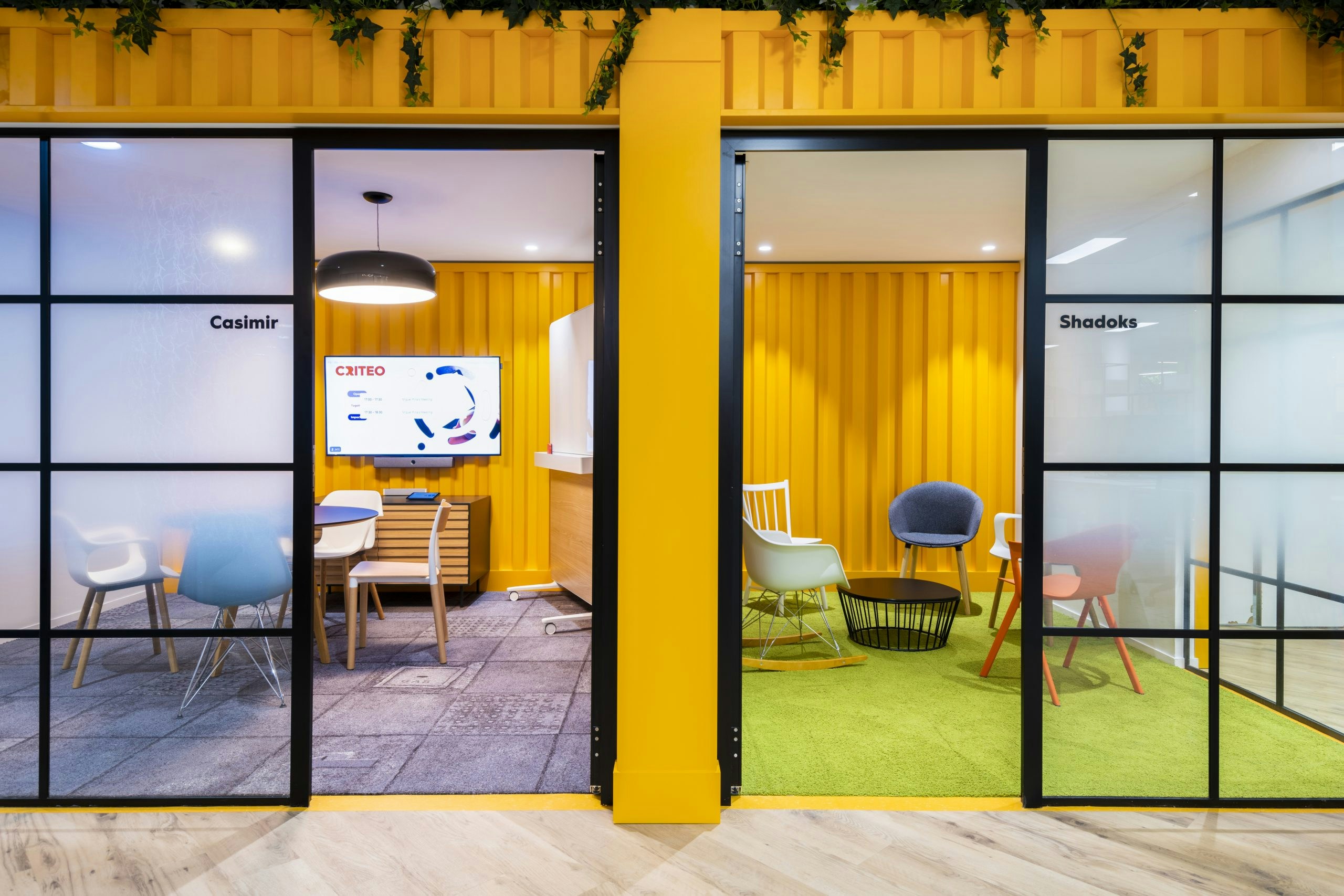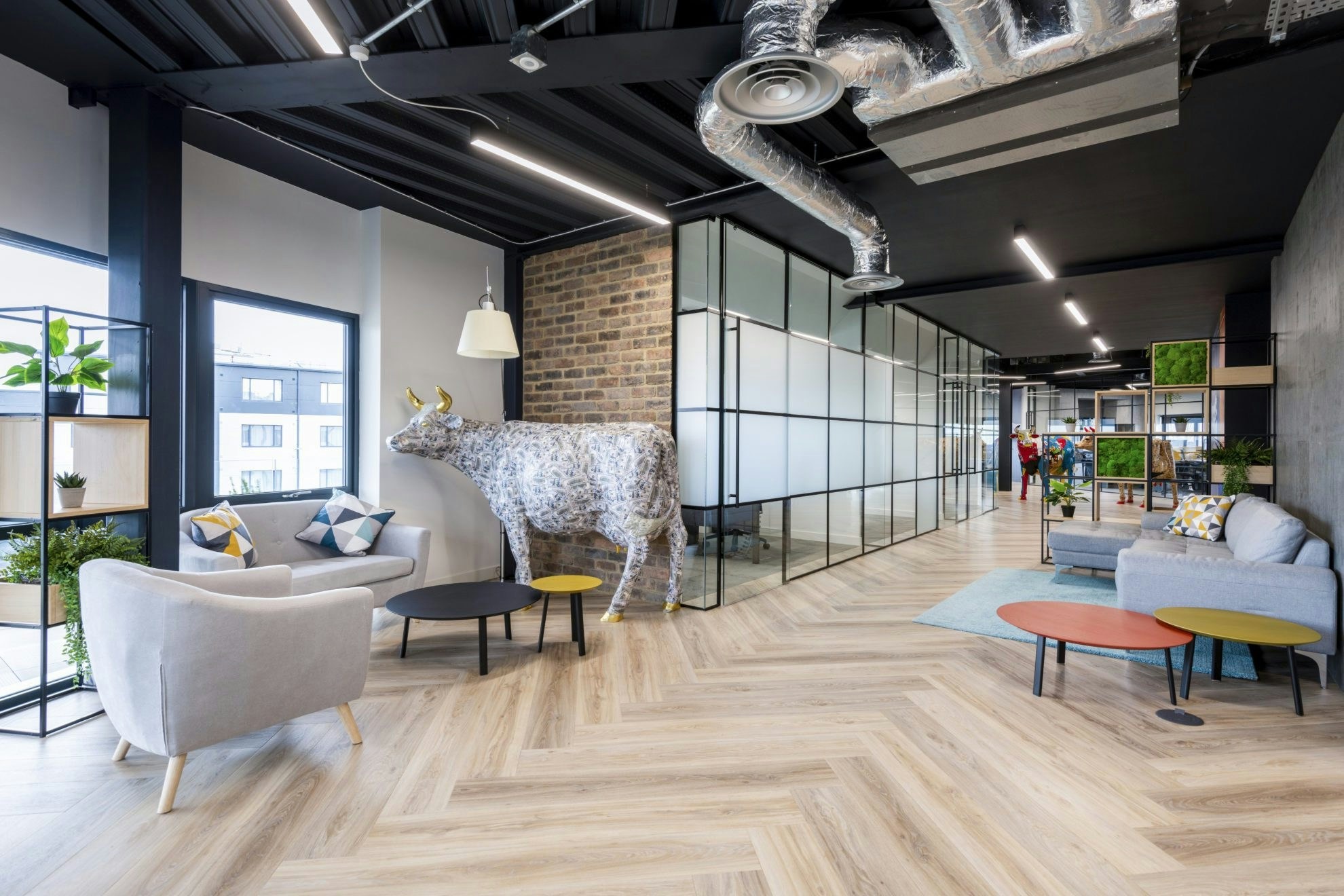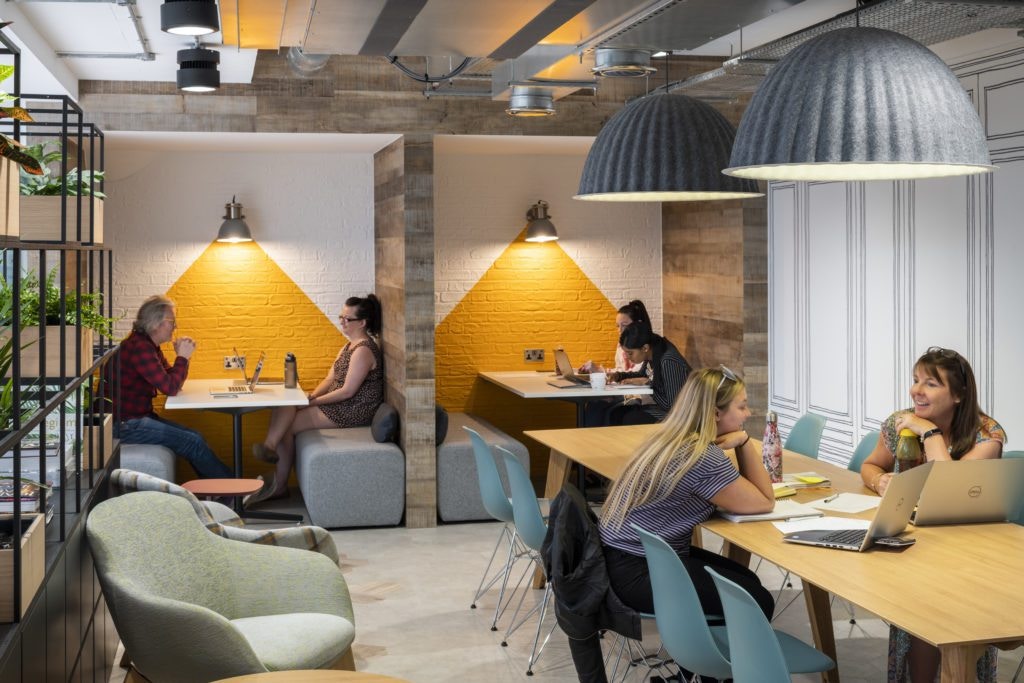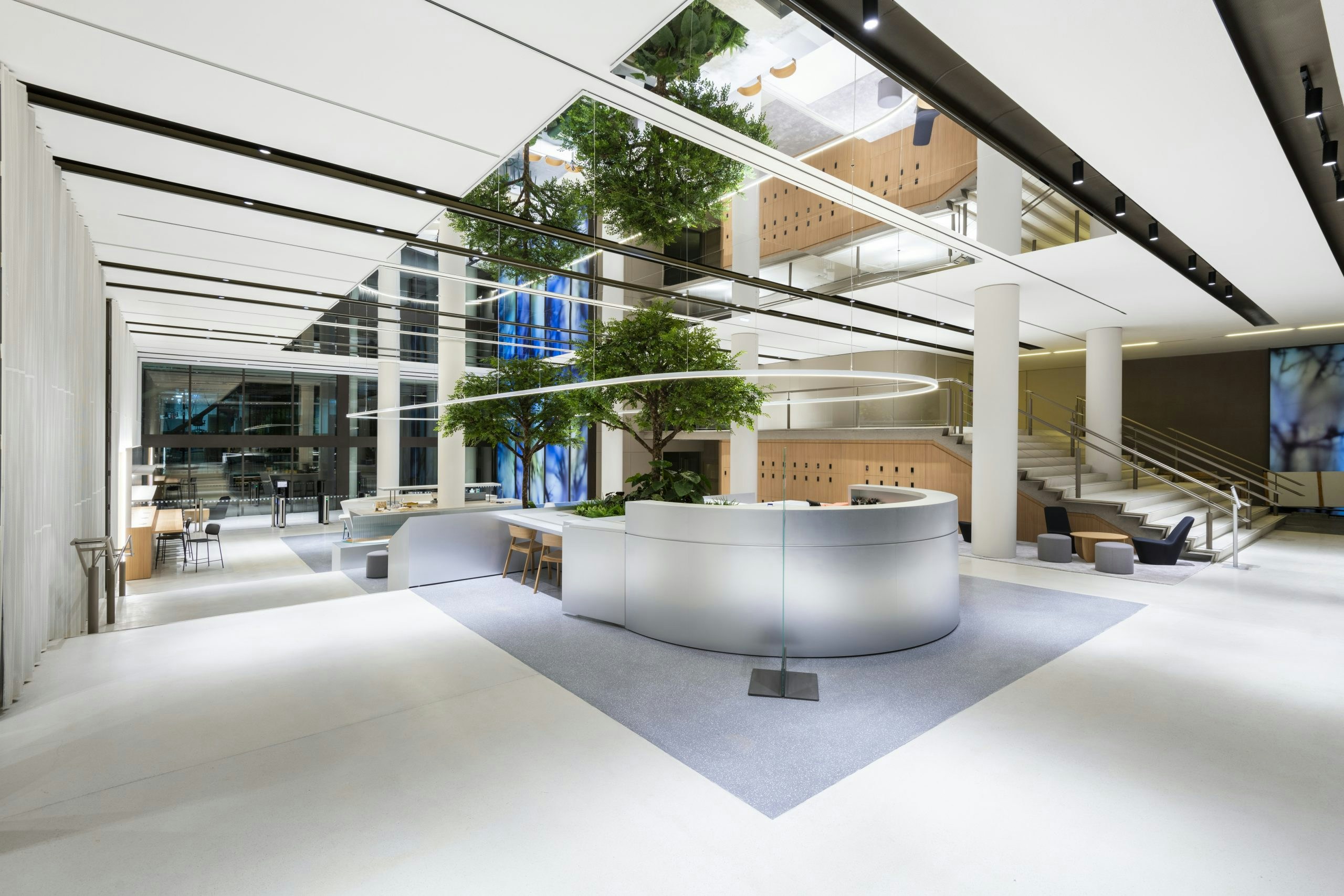Technology is a transformative force in the way we work, continuously reshaping the very fabric of office design. The once-standard cubicle-style layouts and static work environments are now evolving and giving way to more fluid and adaptive spaces and layouts. These shifts reflect not only our advancing technological capabilities but also a renewed understanding of workplace efficiency and employee well-being. As we stand on the cusp of immense technological advancements, from AI and quantum computing to advanced long-life batteries and sustainable technologies, it’s essential to recognise how technology in general is redefining the landscape of office interiors.
Technology and the Changing Workplace
The World Economic Forum’s 2023 Future of Jobs Report claims that technology adoption will play a pivotal role in the transformation of the workplace in the next 5 years, with noteworthy structural changes in around 23% of the workplace.
This transformation, driven largely by rapid technological advancements, has significant implications for office design and workspace functionalities. As the nature of jobs evolves, so does the need for environments that support new ways of working. The traditional office model, with its static cubicles and rigid layouts, is increasingly becoming obsolete. Instead, we’re witnessing the rise of adaptive, fluid spaces that can cater to a variety of tasks, from deep-focus work to collaborative brainstorming sessions.
Tech companies, for instance, no longer require rows of workstations, they now include collaboration zones and areas dedicated to deep thinking and innovation ( see for example our work for Criteo). Similarly, client-facing companies are moving from meeting rooms to include lounges and entertainment areas for clients, as with our work for DTRE. That interface between technology and workspaces is not merely a fleeting trend but a profound evolution of the global workplace, changing how and where we work.
The Impact of Technology on Office Design
Modern office design is not just about aesthetics and layout; it’s deeply interwoven with technology and driven by efficiency, innovation and sustainable practices (see our article smart office design). As companies strive to stay ahead in this rapidly evolving landscape, there are certain technological features that have become indispensable to modern offices:
- High-Speed Internet: real-time collaboration requires a fast and reliable internet connection, so having fibre to the premises (FTTP) has become the backbone of every operation, ensuring uninterrupted workflows and instant communication.
- Digital Conference Rooms: traditional meeting spaces are now equipped with advanced video conferencing tools, smart whiteboards, and automated scheduling systems, allowing seamless collaboration whether in the office, at home or on the move.
- AR/VR Technology: increasingly augmented technology that is allowing for more immersive training sessions, virtual tours, site visits, and innovative product demonstrations.
- Smart Lighting and HAVC: Energy-efficient lighting systems and intelligent HAVC controls not only reduce operational costs but also enhance employee comfort and make the office a nicer place to work.
- Integrated Communication: Communication staples like Microsoft Teams and Zoom have become deeply integrated into the way we work allowing instant messaging, file sharing, and team collaboration in a single unified platform.
- IoT-Enabled Office: From smart coffee machines to desk booking systems, the Internet of Things is revolutionising the ease and flow of work inside and outside the physical office.
The features mentioned offer only a glimpse into the vast expanse of technology and its influence on the modern workplace. But it’s important to remember that tech



